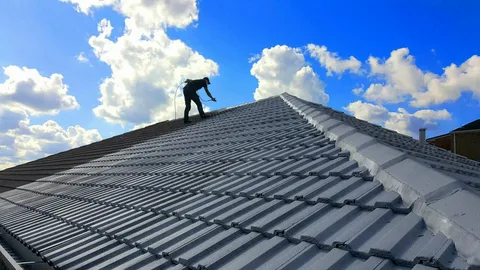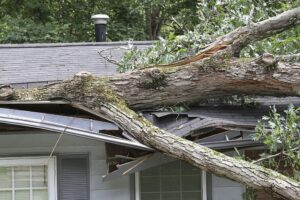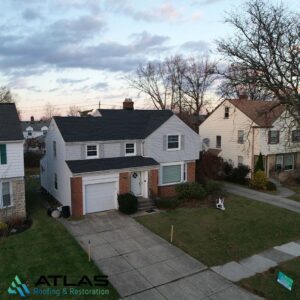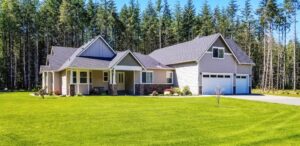When it comes to commercial roof installation, business owners and property managers often have to consider a variety of factors that can impact the total cost of the project. A roof is a crucial component of any commercial property, providing protection from the elements and helping maintain the structural integrity of the building. Understanding the factors that affect commercial roof installation costs can help you make informed decisions when selecting roofing services. In this blog post, we will discuss the top factors that influence the cost of commercial roof installation and how you can budget for your roofing project.
1. Type of Roofing Material
One of the most significant factors that affect the cost of a commercial roof installation is the type of roofing material you choose. Different roofing materials come with varying price points, durability, and installation requirements. Some of the most common roofing materials used for commercial buildings include:
- TPO (Thermoplastic Olefin): This is a popular option due to its energy efficiency and cost-effectiveness. TPO roofing systems are known for their reflective surface, which helps reduce energy costs by keeping the building cooler.
- EPDM (Ethylene Propylene Diene Monomer): EPDM is a durable, weather-resistant material commonly used for flat roofs. While it is affordable and long-lasting, it may not provide the same energy efficiency as other materials.
- Modified Bitumen: This roofing system is a blend of asphalt and rubber, providing durability and resistance to harsh weather conditions. However, it is often more expensive than other options.
- Metal Roofing: Metal roofs are known for their longevity and durability. They are more expensive initially but can provide significant savings in the long term due to their energy efficiency and reduced maintenance needs.
- Built-Up Roofing (BUR): BUR systems consist of multiple layers of bitumen and reinforcing fabric. This option can be costly, but it offers excellent waterproofing and durability.
The type of roofing material you choose will significantly influence both the initial cost of installation and the long-term maintenance requirements.
2. Roof Size and Complexity
The size of the roof and its complexity play a significant role in determining the cost of installation. Larger roofs require more materials, labor, and time to install, resulting in higher costs. Additionally, the complexity of the roof’s design can affect the installation process. Roofs with multiple angles, slopes, or unique features such as skylights or chimneys may require additional labor and expertise.
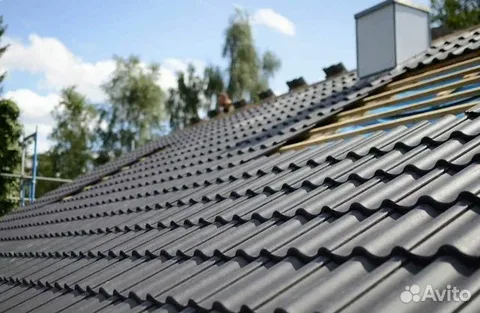
Flat roofs tend to be less expensive to install compared to pitched or sloped roofs because they require fewer materials and can be installed more quickly. However, more complex roof structures with intricate designs may increase the cost due to the additional work required for proper installation and flashing.
3. Roof Condition and Repairs
Before installing a new roof, contractors will often need to assess the condition of the existing roof. If the existing roof is damaged or deteriorated, additional work may be required to remove the old roofing materials and repair any underlying damage. This can add significant costs to the project.
For instance, if there is extensive water damage, rot, or mold, the contractor may need to replace sections of the decking or insulation before installing the new roof. These repair costs can vary depending on the extent of the damage and the materials that need to be replaced.
4. Roofing System Complexity
Some commercial roofing systems are more complex than others, requiring specialized installation techniques. For example, a green roof (which includes vegetation) or a roof with solar panels will require additional time, labor, and expertise to install. The complexity of these systems often means that the installation cost will be higher.
Additionally, some roofing systems, such as those that require specific insulation materials, moisture barriers, or advanced flashing techniques, will increase the overall cost of the installation. Contractors may also need to use specialized equipment to install these systems, which can further raise the cost.
5. Labor Costs
Labor costs can vary widely depending on the location, the roofing contractor’s experience, and the difficulty of the project. Highly skilled roofers may charge more for their services, especially if the roof is complex or requires additional expertise. Labor costs can also be influenced by the local economy, with some regions experiencing higher labor rates due to demand for roofing services.
Additionally, if the installation project is large or requires work during off-hours (such as weekends or nighttime), labor costs may increase due to the need for more workers or overtime pay. It is important to factor in these potential costs when budgeting for commercial roof installation.
6. Roof Slope and Accessibility
The slope of the roof and its accessibility also affect installation costs. Steeper roofs often require additional safety precautions and specialized equipment for the roofing crew. Roofs with a high slope may require more labor to install due to the difficulty of working at height and the need for scaffolding or harness systems.
In contrast, a roof that is easy to access will typically result in lower installation costs. If a roof is difficult to reach, such as on a tall building or in an area with limited access, the roofing contractor may need to use cranes or other equipment to transport materials, which can increase both time and cost.
7. Geographic Location
Your location can play a significant role in determining the cost of commercial roof installation. Different regions have varying construction costs, labor rates, and material prices. For example, commercial roofing projects in urban areas or regions with a high cost of living may be more expensive than in rural areas.
Additionally, local building codes, weather conditions, and climate can affect roofing costs. Roofs in areas prone to severe weather conditions, such as heavy snow, hail, or hurricanes, may require more durable materials and additional features like reinforced flashing, which can increase installation costs.
8. Permits and Inspections
In many areas, commercial roof installation projects require permits and inspections to ensure that the work complies with local building codes and regulations. The cost of permits can vary depending on the municipality and the scope of the project. These costs should be factored into the overall budget for the roof installation.
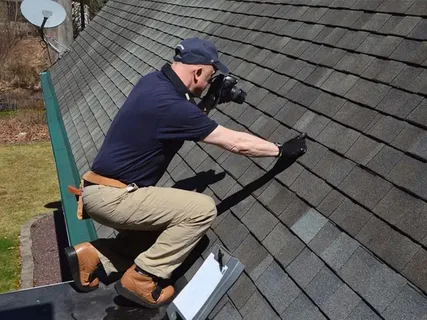
In some cases, the roofing contractor may handle the permit and inspection process, while in others, the property owner may be responsible for obtaining the necessary permits. Either way, it is important to account for these additional costs when planning your commercial roof installation.
9. Additional Features and Customizations
Many commercial roofs come with additional features that can increase the overall cost of installation. These may include:
- Roof insulation: High-quality insulation can help reduce energy costs in commercial buildings by providing better temperature regulation.
- Gutters and downspouts: Proper drainage systems are crucial to prevent water buildup, which can lead to roof damage. Adding or upgrading gutters and downspouts may increase the cost of installation.
- Roof coatings: Some commercial roofs require protective coatings to extend the life of the roof and enhance its performance. This additional layer of protection may come at an added cost.
Customizations such as skylights, rooftop gardens, or solar panels can also drive up costs due to the specialized labor and materials required for installation.
10. Roof Warranty
The length and type of warranty offered with your commercial roof installation can affect the total cost of the project. Roofs with extended warranties or more comprehensive coverage typically come at a higher price. However, these warranties can provide peace of mind, knowing that your roof will be protected against defects and potential issues for years to come.
Conclusion
Commercial roof installation is a significant investment that requires careful consideration of several factors. The type of roofing material, the size and complexity of the roof, labor costs, and geographic location all play a role in determining the overall cost of installation. By understanding these factors, you can make an informed decision when selecting a roofing contractor and ensure that your new roof provides long-term protection for your commercial property.
When it comes to roofing services in Northeast Ohio, Atlas Roofing & Restoration is a trusted provider committed to delivering high-quality installations and exceptional customer service. Contact us today to get started on your commercial roofing project!

